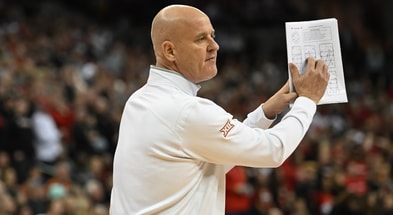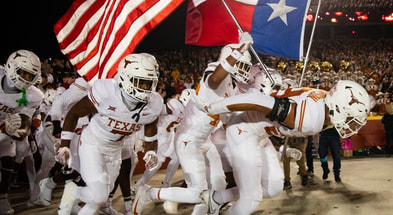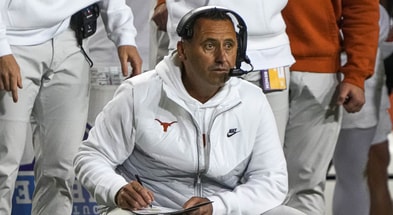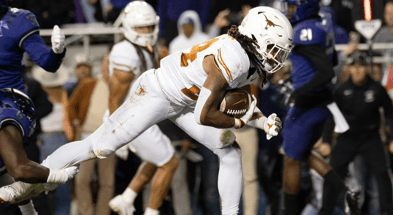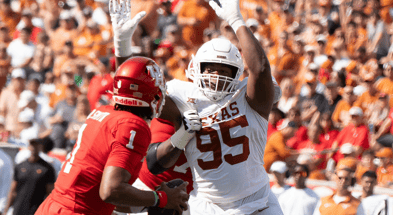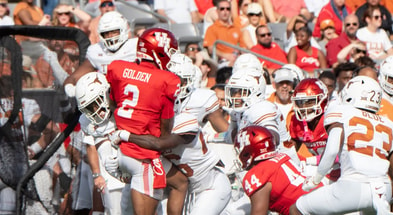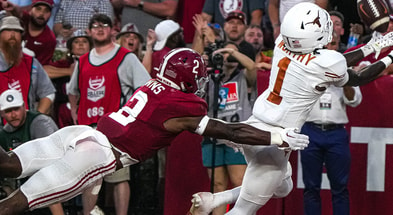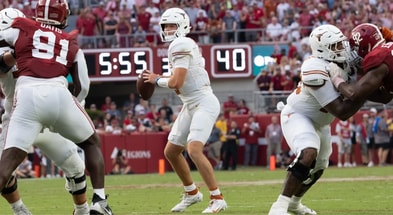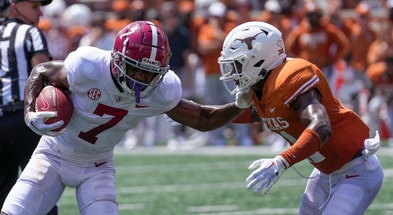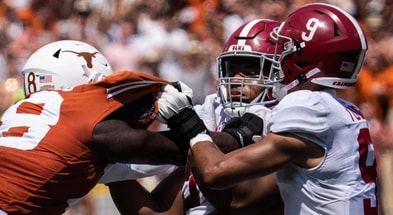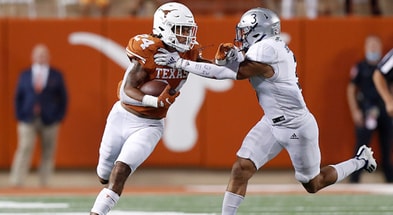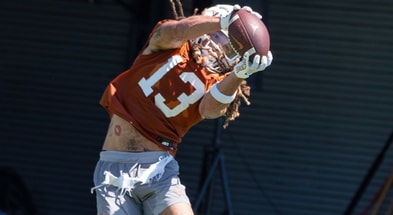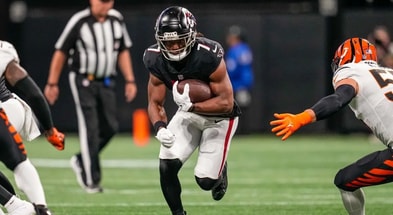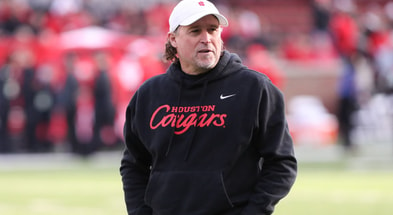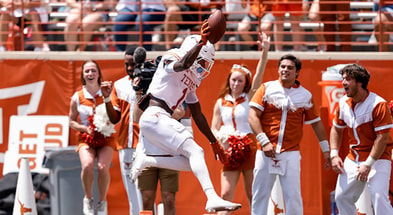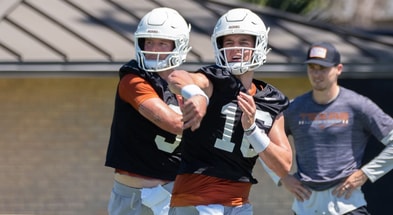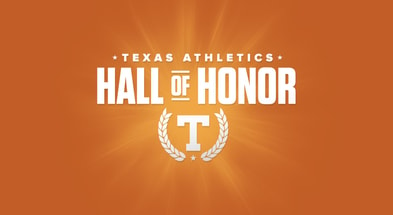Three things to watch against TCU
It’s a bit amusing the extent to which TCU has finally arrived at Gary Patterson’s offensive vision now that he’s no longer in Fort Worth. For years he was trying to build units which resembled the ones that would cross the Red River from Norman, Okla., raze his fort, and then leave him with a loss. Units with big, physical offensive lines who could run the ball and control games from spread formations.
[Get FOUR MONTHS of Inside Texas Plus for $1!]
TCU has an offense like that now that Sonny Dykes is running the show. Meanwhile, the defense no longer resembles a Gary Patterson 4-2-5, instead they run a 3-down Flyover which operates like Iowa State’s scheme. It makes for a potent combination, an offense designed to function similarly to a Lincoln Riley Sooner unit paired with Iowa State’s defensive approach. They’re 9-0 thus far while utilizing these strategies, but the proof will be in the pudding when they have to take their show on the road to Austin in a must-win game for the Texas Longhorns.
TCU’s run game
There’s a lot to say about TCU’s run game and how instrumental it’s been in their success as a team this season. Max Duggan‘s stats are pretty illustrative, he’s thrown 244 passes for 2,407 yards at 9.9 ypa with 24 touchdowns to two interceptions. It’s pretty hard to reach efficiency of that caliber without good play-action.
The game-by-game stats are also indicative. Duggan averages about 27 pass attempts per game and nine carries. Compare to Sam Ehlinger‘s winning numbers in 2018 when he averaged 30.4 attempts a game and 11.8 carries, many of them in short-yardage. It’s a manageable load Duggan carries and his experience and toughness allows him to bear it well. The remarkably low interception numbers are a huge factor in their success and this is achieved largely by allowing Duggan to make his attempts on play-action, quick game, and only occasionally via dropback/progression passing.
Lead running back Kendre Miller is the main emphasis of the whole offense, even over the exciting Quentin Johnston whom TCU involves inconsistently. Miller has already run for over 1,000 yards this season at 6.6 ypc with 12 touchdowns. Their offense is heavy on GT counter-read and tight zone and the O-line is stocked with big, strong players like left guard Steve Avila (6-foot-4, 330 pounds).
The first example is GT counter-read. TCU has tight ends (like Jared Wiley) you can see them using in the second clip. However, the fact they can “block” a D-lineman with an option read by Max Duggan allows them to run power concepts like GT counter from 4-wide formations. The 4-wide spread makes it tough to get big bodies in the path of the run.
The second example is a tight zone/duo sort of scheme and the movement they get down main street behind the interior O-line is indicative of why they’re 9-0 this season.
TCU’s challenge this week is making headway against Texas’ 4-2-5ish quarters scheme game planned with heavy influence from Gary Patterson. The Longhorns will sit back in coverage some with DeMarvion Overshown and Jahdae Barron outside and accept the challenge of holding up against TCU’s run game.
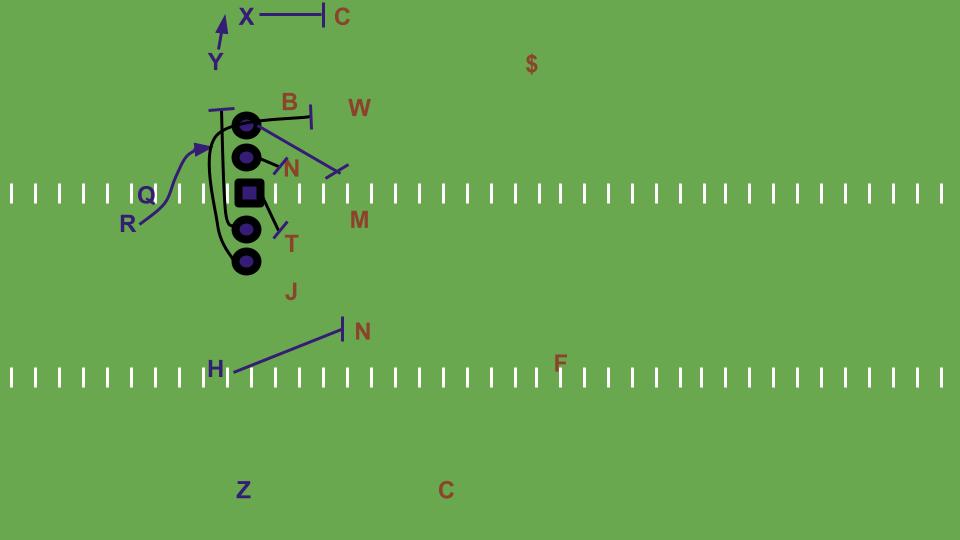
GT counter comes down to the clearing out the “Buck” Edge in the boundary well enough to negate the speed and tackling of DeMarvion Overshown and Jerrin Thompson behind. With the improved play of Ovie Oghoufo and the Longhorn Edges, this tends not to happen in 2022.
It’s not a bright prognosis for TCU. Teams have tried all season to find angles to run the ball on Texas and found very little. The Longhorn Edges play the run tough and physical on the perimeter this season and inside runs at Keondre Coburn and the tackles don’t typically find a lot of room to breathe.
How well does TCU hold up in run defense?
The Frogs have faced a few good running teams this season already in Oklahoma and Kansas State. Oklahoma got down big early and lost Dillon Gabriel but the two main Sooner backs Jovantae Barnes and Eric Gray combined for 160 yards on 31 carries at 5.2 ypc with three touchdowns. K-State ran the ball 30 times for 158 yards at 5.3 ypc with two touchdowns.
Their approach of clogging interior gaps and racing linebackers to the ball while safeties back-fill behind works in much same way as Iowa State’s defense. They love to play their linebackers at depth (about five yards deep) and give them some momentum and angles to hit the gaps.
Texas’ accumulated store of plays for creating angles and drawing in back seven defenders closer to the point of attack to face big blockers against these Flyover defenses should all yield more returns in this game. This is also a game for outside zone if Texas can get it right. The Frogs prefer to line up with Dylan Horton, their true defensive end, on the edge with Damonic Williams at nose and Georgia transfer Tymon Mitchell (6-foot-3, 300 pounds) or Terrell Cooper (6-foot-2, 285 pounds) as the other end/tackle.
If Texas can catch Williams effectively, the nature of outside zone should be excellent for punishing TCU’s attempts to play their linebackers at depth by getting guards down the field more quickly and moving the gaps so they can’t play as confidently at linebacker. Particularly split outside zone.
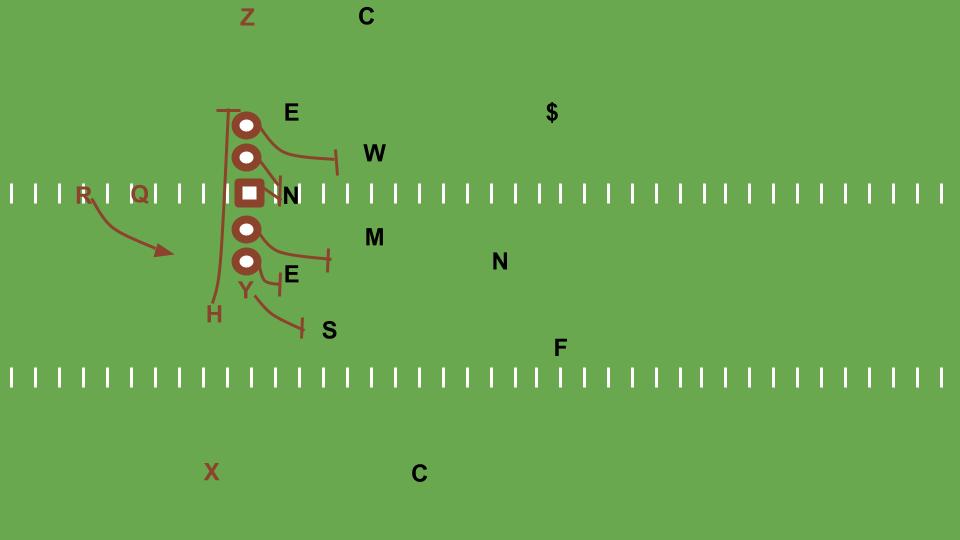
The split action by the tight ends is hard on linebackers who play back and are trying to run to the ball and read the flow on the move, as is the way outside zone can release O-linemen to pick off those linebackers and create crease for Bijan Robinson to find.
TCU’s D-line has to play a great game to avoid getting dragged on the ground by the Longhorn running backs and to have a chance at forcing punts and creating enough possessions for their offense to wear down the Texas defense.
The Max Duggan effect
Duggan is yet another quarterback on Texas’ schedule with a knack for scrambling and keeping plays alive on 3rd down. He’s been terrific at avoiding turnovers and has tormented Texas for years now with quarterback draws and power-read pulls up the middle from empty formations.
The Frogs also have some crossing routes in their offense now they didn’t like to mess with as much under Patterson which have been useful for them in converting 3rd downs by attacking linebackers.
Sark noted the challenge in his Thursday presser saying,
“We need to be sound in our coverages. I think a lot of what happens in there is we have some breakdowns. When we do it right, we can create some explosive plays. Obviously, Jaylan Ford with the big interception last week in that same area of the field. Oklahoma State, I think we might have dropped two or three interceptions in that same area of the field. We’ve got to maximize on our opportunities when they’re there. We’ve got to be sound in our coverage, then ultimately we’ve got to execute those calls.”
Much like Kansas State, TCU tends to land some shots every week with clever route designs off play-action that get receivers running free down the field. TCU’s system is probably less complex than K-State’s, but their receivers are faster and more dangerous. Texas needs to play a clean game and probably rely on their base quarters coverages even more than usual in order to force Duggan to make accurate throws into coverage rather than hitting track speed running free. He’s not immune to throwing picks or taking sacks when throwing in the middle of the field, defenses haven’t been able to encourage the older Duggan out this season.
This is where Gary Patterson can be a highly valuable resource for the Longhorns. He knows the TCU personnel as well as anyone, he knows Sonny Dykes’ schemes as well as anyone, and he’ll have a chance to download it to the Texas players this week and point out tendencies during the game.
Texas has great advantages in this game with their run game and run defense against a running team. The game could flip or become a Texas blowout based on pass offense and pass defense. This is where Patterson could be crucial in helping to generate a big Texas win.
